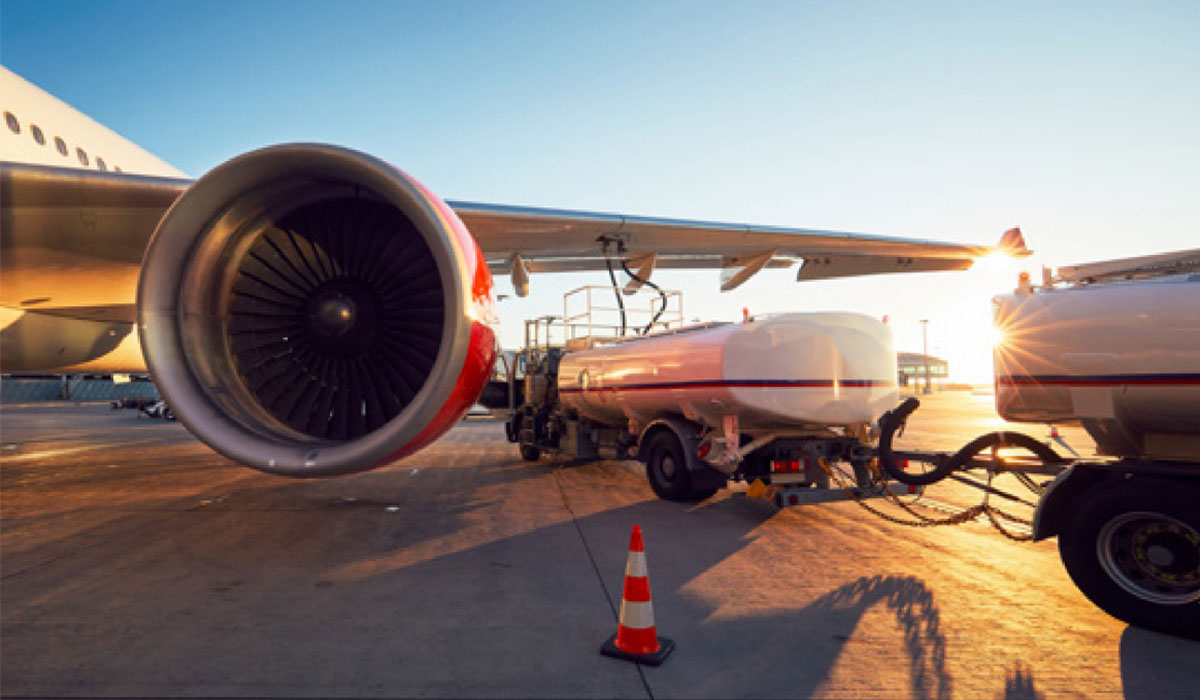

An European conference on synthetic sustainable aviation fuels (SAF) was held on February 8th, 2021 in The Hague (Netherlands) with the aim of fostering dialogue around the subject and creating favorable conditions for the production and use of new types of low-carbon fuel. During the event, it was announced that KLM had operated the very first passenger flight to be partly powered by sustainable synthetic kerosene produced by Shell.
This is certainly a key area as the aviation industry accounts for 2 to 3 % of global CO2 emissions, with an annual growth of 3 to 5% (before the current health crisis). In this context, the objective of a 50 % reduction in emissions by 2050 (compared to 2005) impliesa drastic decrease. Growing public awareness is another important factor encouraging the aviation sector to rapidly reduce carbon emissions, an awareness that is notably expressed as part of “flygskam” (flight shame in Swedish) social movements that are becoming prevalent in numerous countries.
The urgent nature of these changes is exacerbated by extended development times (10 to 15 years) and the long lifespan of commercial aircraft (25 to 30 years), which is why major aircraft manufacturers and their suppliers are studying different types of “drop-in” fuels that can be blended at up to 50 % with the fossil jet fuel used by today’s fleets. The major challenges are the ability to produce large quantities of SAF in the short term and ensuring these alternative fuels are cost competitive.
Questions of cost notwithstanding, the obligation to progressively incorporate synthetic fuels will develop a market for them.
The advantage of jet fuel is that it packs a lot of energy for its weight, and it is this high energy density that enables commercial flight. No other economically viable option for rapidly transporting large groups of people over very long distances exists today. Only sustainable fuels capable of being incorporated into fossil kerosene (without changing either the aircraft or the supply chain) will provide a way of breaking free from this dependence.
These alternatives include biofuels and synthetic fuels. Biofuels are produced from sustainable feedstock - hence the reduction in carbon emissions - and are very similar in their chemistry to traditional fossil jet fuel. Typical feedstocks include used cooking oil and other waste oils, as well as solid waste from homes and businesses. Other potential sources include forestry waste, such as waste wood, and energy crops (crops grown solely for energy production), notably fast-growing plants and algae. In any event, the biomass would go through pre-treatment and gasification, before being transformed into a perfect kerosene substitute using the Fischer-Tropsch process that converts carbon monoxide and hydrogen into liquid hydrocarbons.
There are very real reductions in greenhouse gas (GHG) emissions to be obtained by using biofuels, however these vary depending on the origin of raw materials used for their production. For example, biofuels made from rapeseed, palm and soy oils can in fact have a negative impact when the effects of indirect land use change (ILUC) are taken into consideration. In France, the road map for the aviation sector has already excluded them and, although biofuels produced from waste and residues are still relevant for aviation, we can go further and produce sustainable fuels of non-biological origin using renewable energy.
Just like green hydrogen for road transport, synthetic kerosene (e-kerosene) is produced using renewable electricity. The idea is to use wind or solar energy to power an electrolyser that splits water into hydrogen (and oxygen). The hydrogen is subsequently combined with CO2, once again using the FischerTropsch process, to create a new green fuel. If attention is paid to the source of CO2, using renewable electricity is a way of moving towards carbon neutrality.
The resources required to produce one litre of synthetic kerosene.
In both cases (DAC and biomass), the carbon emitted by planes will already have been used elsewhere and so the carbon footprint is close to zero.
While waiting for revolutionary breakthrough technologies, it is important to intensify the research effort and find the necessary funds in order to improve current aircraft and reduce carbon emissions across the board. Amongst the avenues currently being explored, SAF seems to be about to take off!
ENGIE is working with several partners to study ways of producing sustainable synthetic methanol (e-Methanol) using green hydrogen and locally produced CO2. This represents the first step in creating a circular economy in port areas where methanol would be both a raw material and a fuel, for example for shipping. The first ‘Power to Methanol’ project will be located at the Inovyn site in the Port of Antwerp and a second, once again in the North Sea, will be installed near the ENGIE Rodenhuize power station. To finance these developments, these two projects have applied for IPCEI H2 status and requested funding from the Fonds d’Innovation in France.
Written by Elodie Le CADRE-LORET (ENGIE RESEARCH), Laurence BOISRAME (DIRECTION DE L’INNOVATION STRATÉGIQUE ET DE LA DISRUPTION), Samuel SAYSSET (ENGIE RESEARCH), Julien COLAS (BU H2) and Bob VAN SCHOOR (ENGIE GÉNÉRATION EUROPE) pour le Magazine Pour la Science.